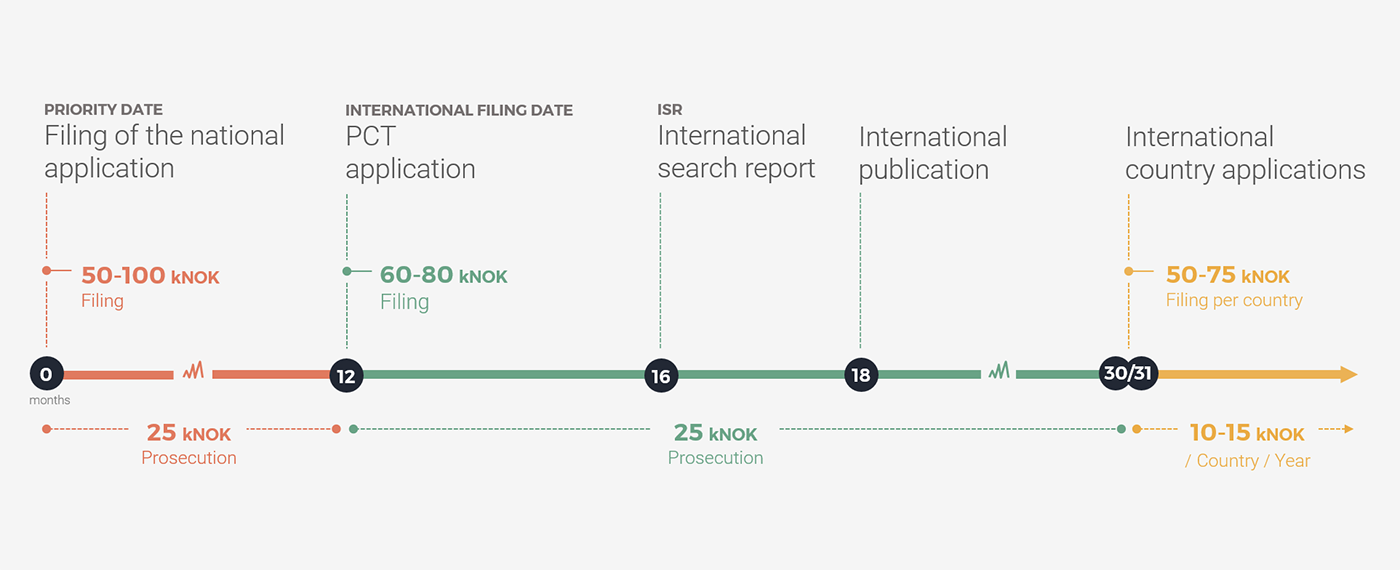
Intellectual property rights (IPR) is a collective term. On the one hand, you have rights that can be registered, such as patents, trademarks and design rights. On the other, there are rights that can not be registered, such as trade secrets, copyrights and knowledge.
Intellectual Property Rights
The first thing we do in evaluating your idea is a “state of the art” or “background art” check of the literature. We find out if your idea is unique, what the market is and also get an overview of competitors. Then we look at the available options for protecting your idea:
Patent
If your idea is an invention, you can gain a competitive edge by applying for a patent. With a patent, you maintain control over your idea in the various stages of your project, and you get exclusive rights in the market you want to enter. A patent protects a concrete solution to a technical problem. Your invention must be new and not disclosed to anyone else before you submit your patent application.
Brands
If patenting is not applicable, trademark protection may be the best option. You can apply for an exclusive right on your logo, the name of your business or on a product. Trademark may consist of words, names, logos, characters, letter, numbers, sounds, or a combination of these.
You should also consider whether your domain name and company name are clear so that you ensure full freedom to the use of the names while preventing others from taking the names in use.
Design
Occasionally, design may be an appropriate IPR for the commercialization project. We will then work to get sole rights on the appearance and form of your idea – which might be a specific product – by applying for a design registration. This prevents others from copying your design and exploiting your idea. For a design to be registered, it must be new. In Norway, however, you have the opportunity to try out a new design on the market for up to 12 months before submitting an application.
Know-how
This is the knowledge that one or more people have acquired, over time, during the performance of tasks related to their work. It’s often of a technical nature. Know-how can be protected by confidentiality rules in employment contracts, as well as through clauses that protect know-how in agreements with suppliers and customers.
Secrecy
This is not an intellectual protection that TTO uses very often, as it would conflict with the main mandate of all researchers at NTNU which is to publish. We can, however, help develop a business strategy that enables both secrecy of business purpose and also satisfies the need for academic publishing.
About patenting
Patenting stimulates innovation
The first patent system was established in the United States in 1790. The intention then was the same as it is today, to stimulate innovation. The patent system ensures that unique inventions have a time-limited monopoly. Through this competitive advantage, it is possible to attract the necessary financing from investors that idea development is entirely dependent on.
The patent application
In order to arrive at the best patenting strategy for your idea, we aim to involve professional international patent agencies that are experts in that specialized area. Working closely with you and the patent office, we normally need several weeks to prepare a successful application. If there is limited time before your research results are to be presented, we can evaluate a simpler, streamlined submission for the patent application.
A patent is not an obstacle to publication
A widespread misunderstanding is that patenting prevents scientific publication. But both steps are fully possible if you take them in the right order. The most important thing is to file a patent application before any public release of information takes place. That means not only the publication of a scientific article in a journal, but also oral presentations in seminars, conference records or media coverage in any form (in one form or another). That’s exactly why we want to get in touch with you as soon as possible so that your publishing needs are not delayed.
Patent application timeline
Click here or on the image for large version

